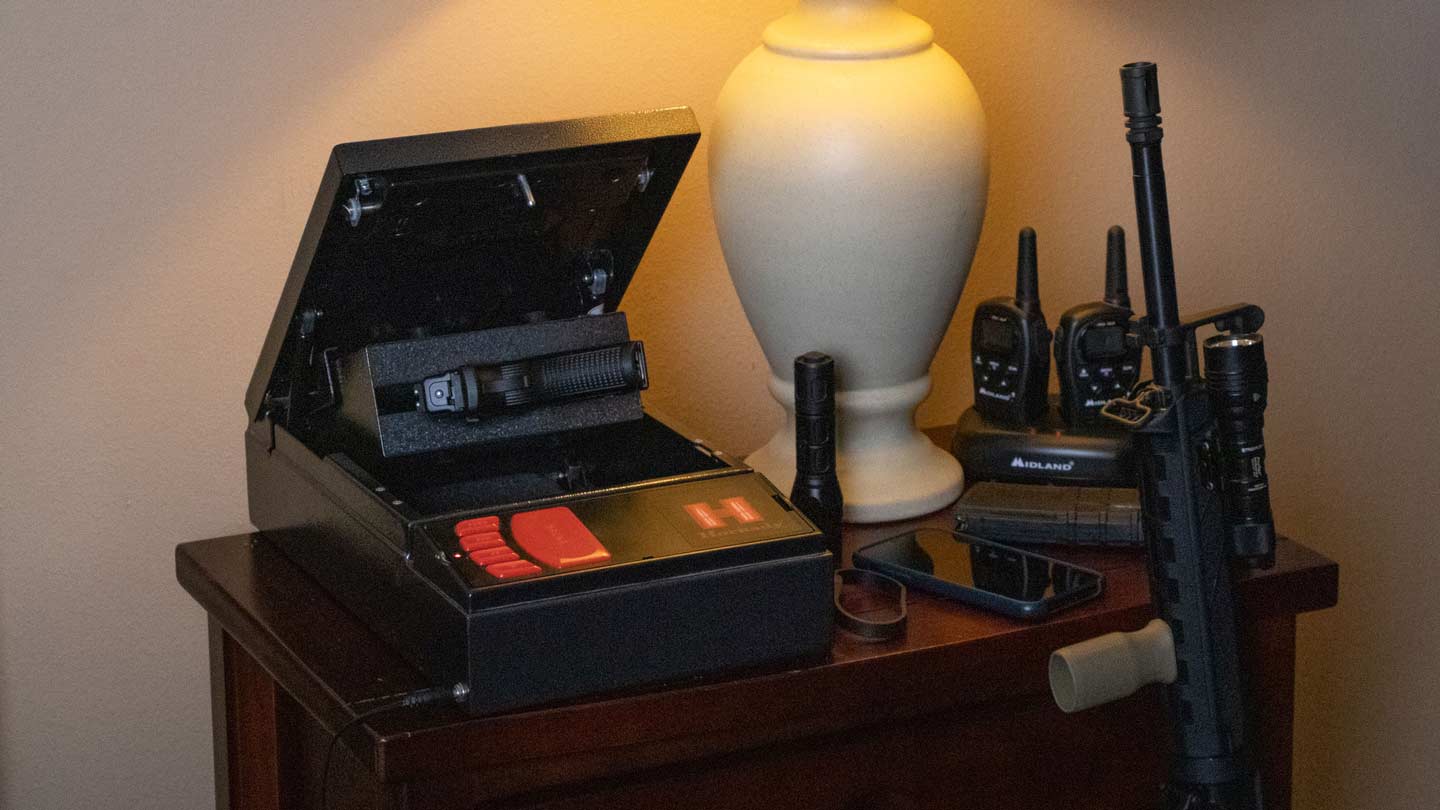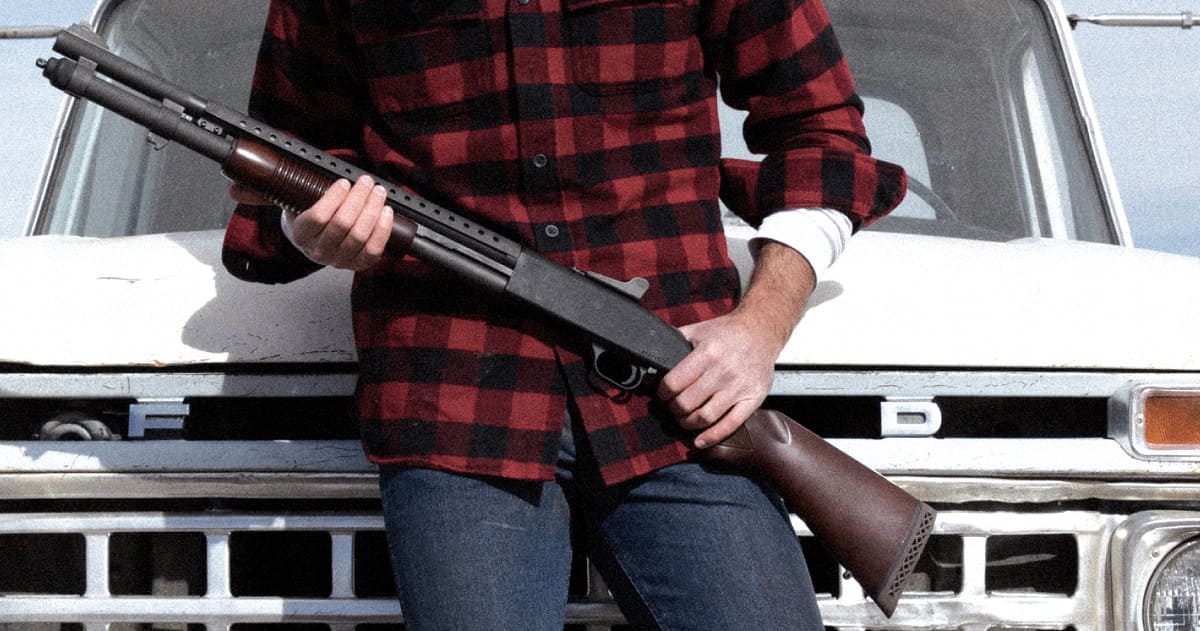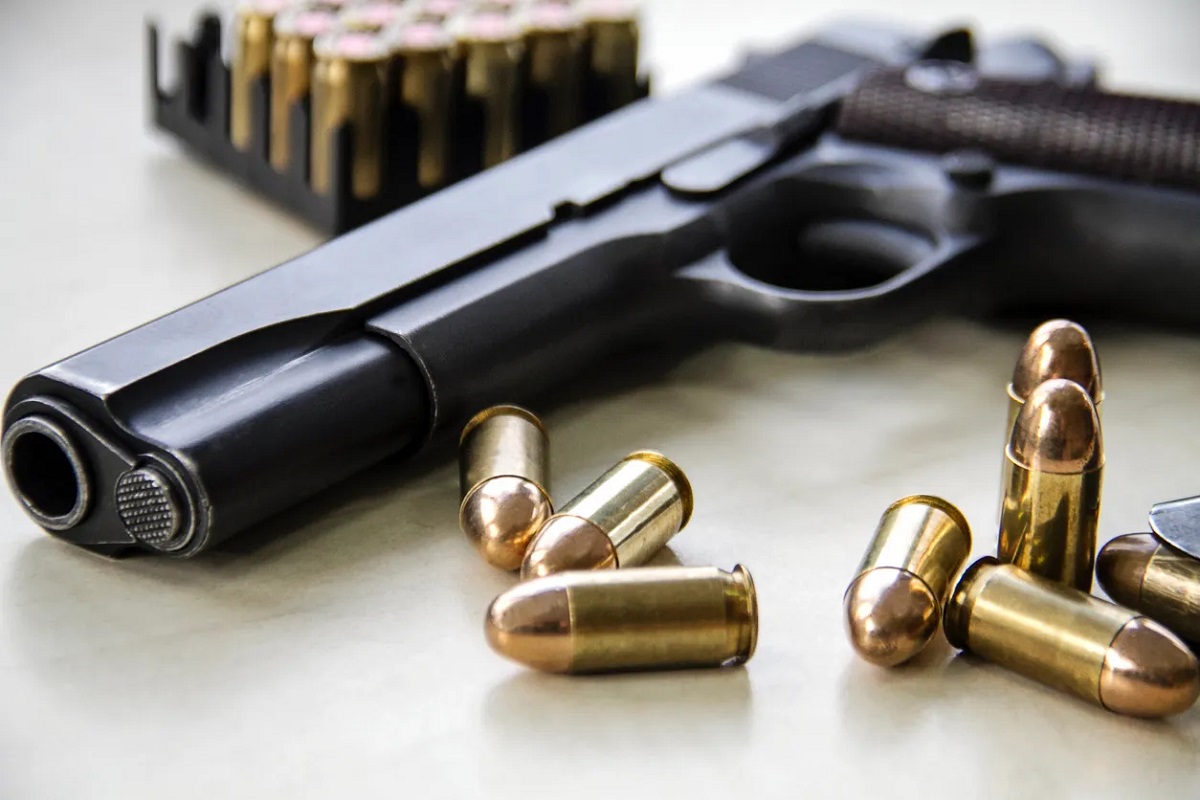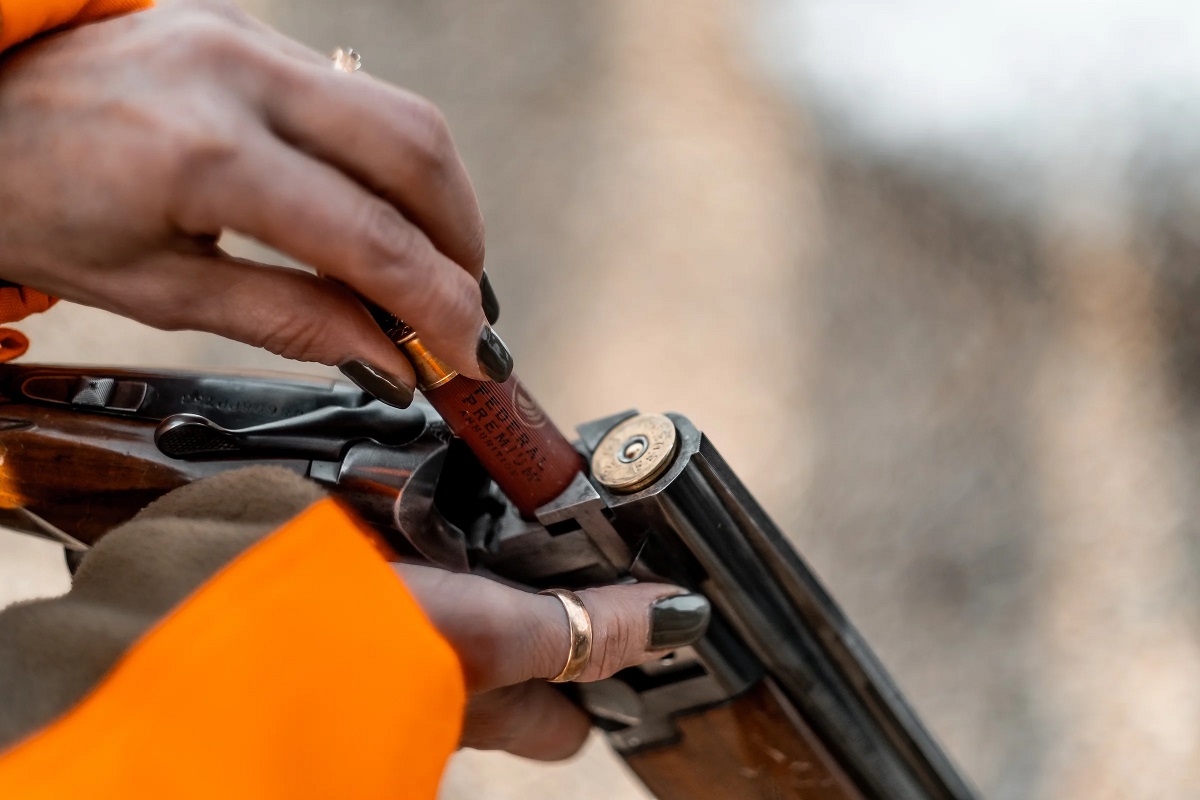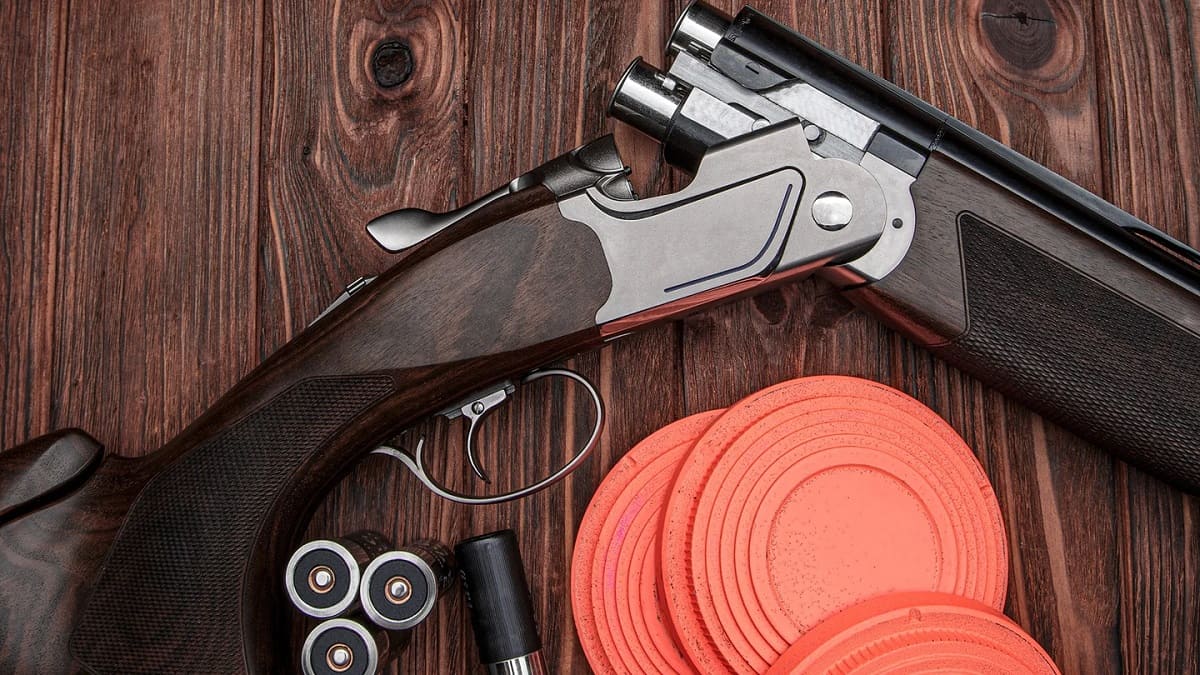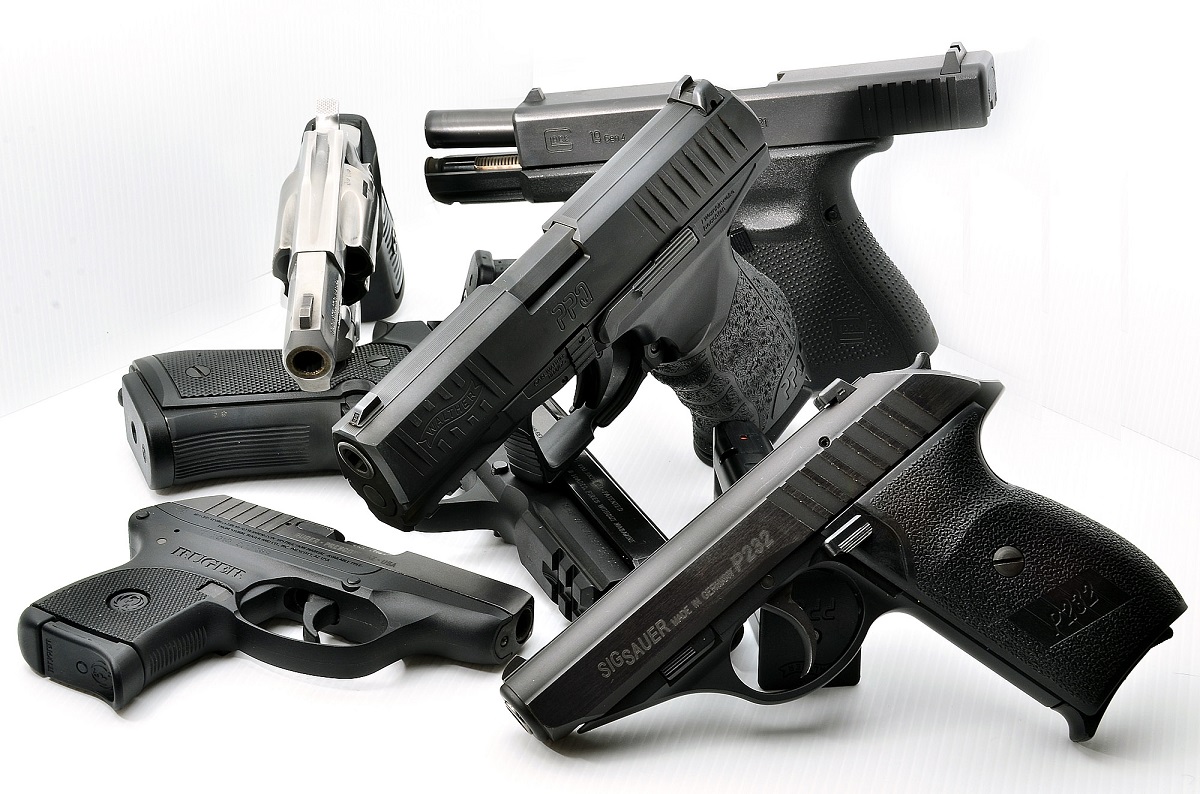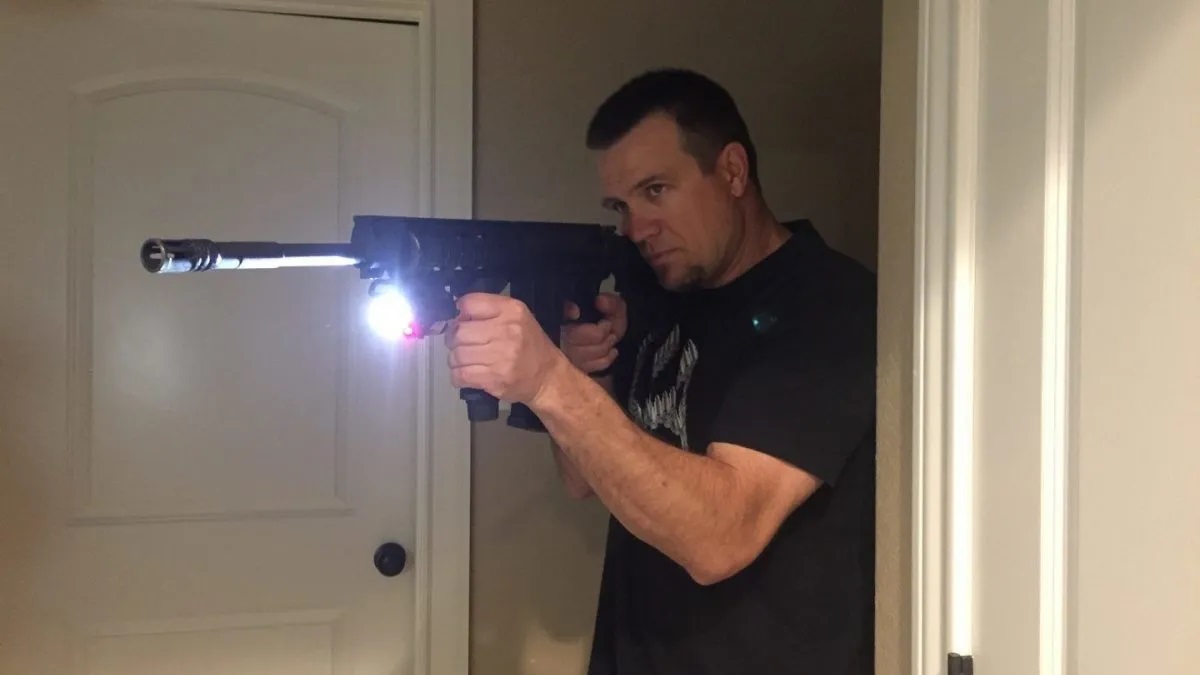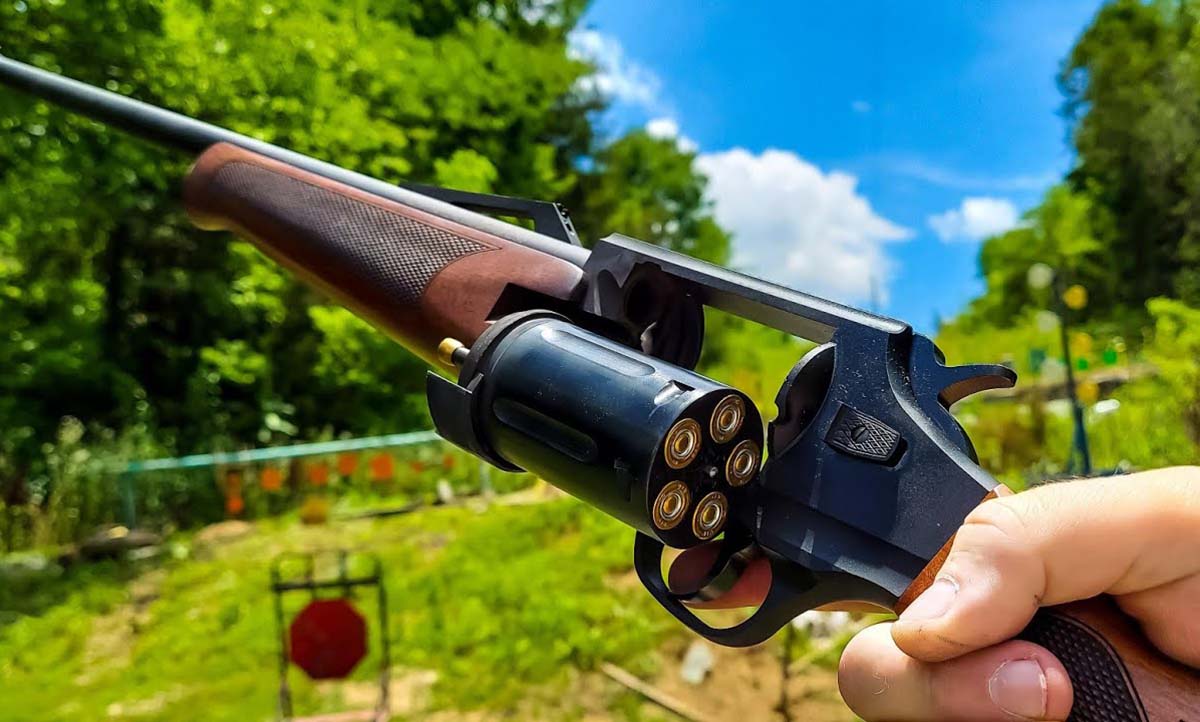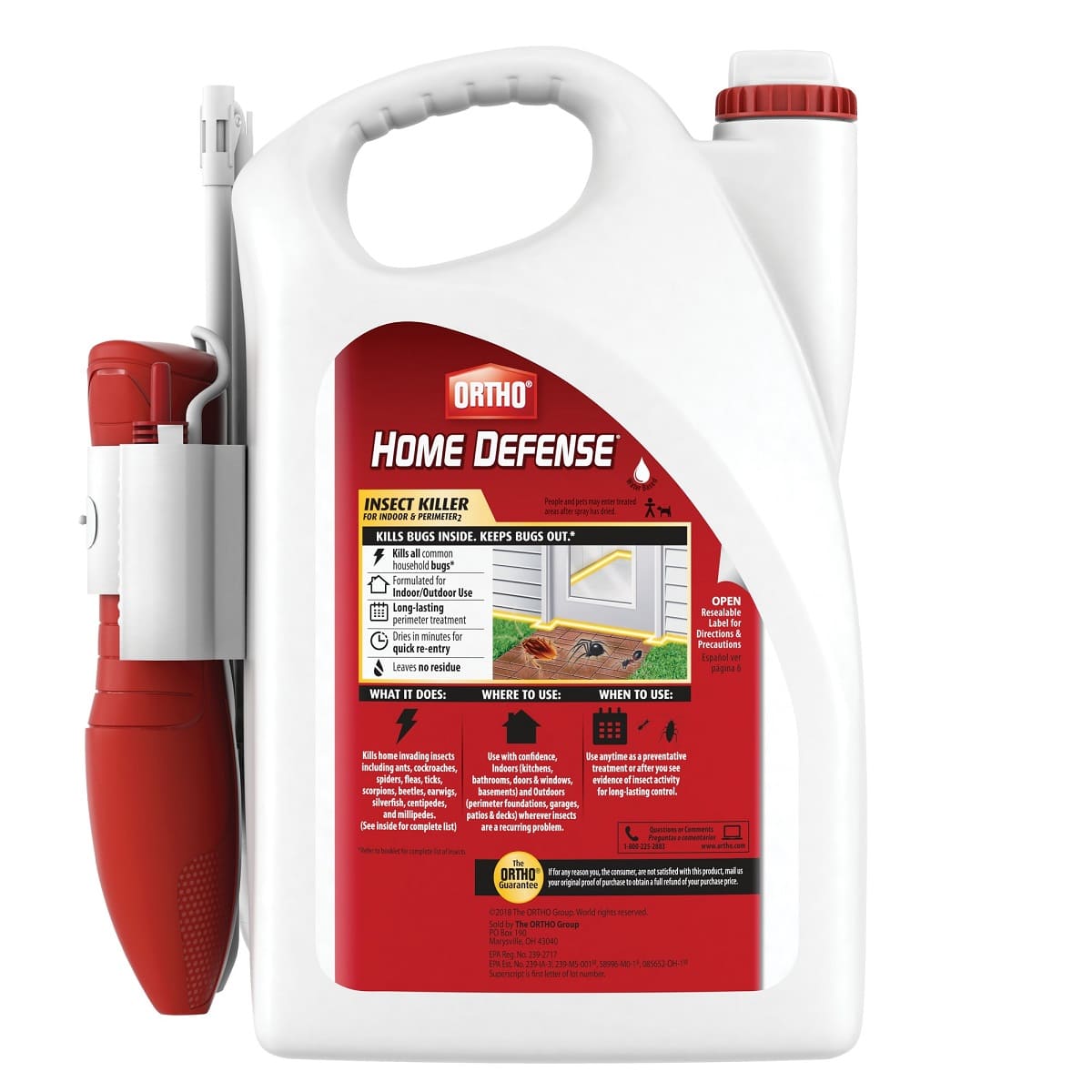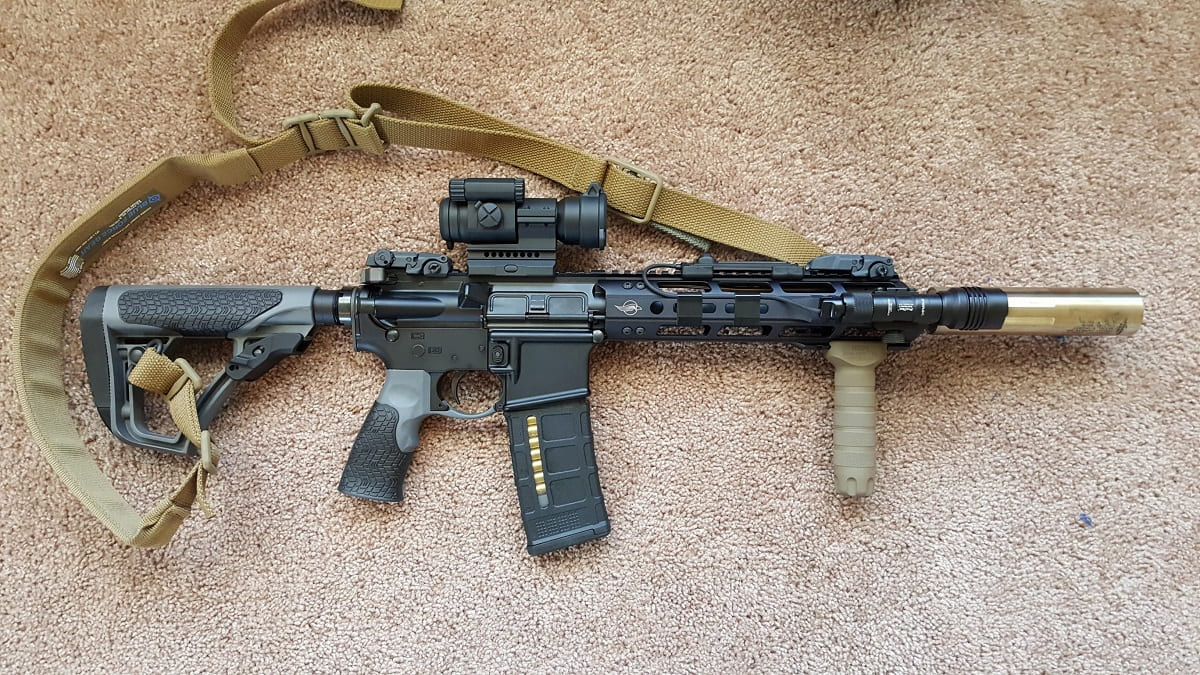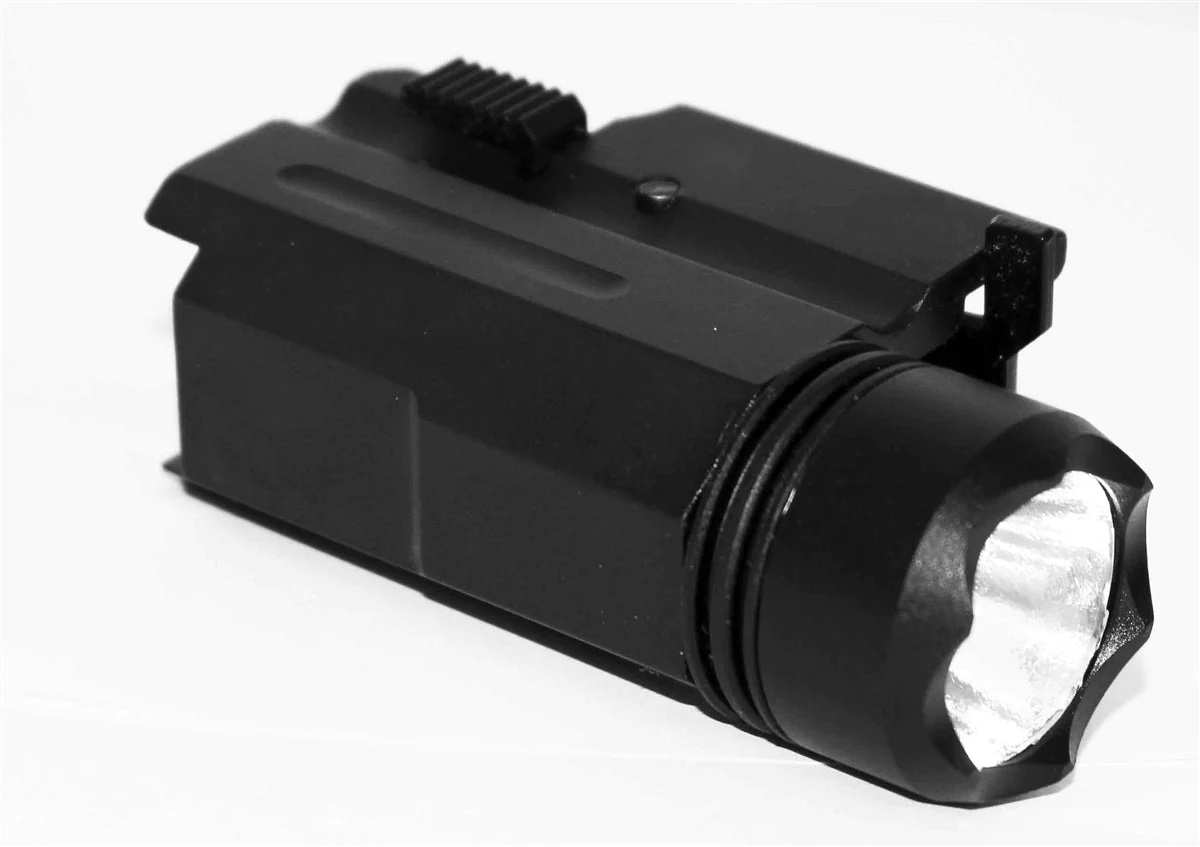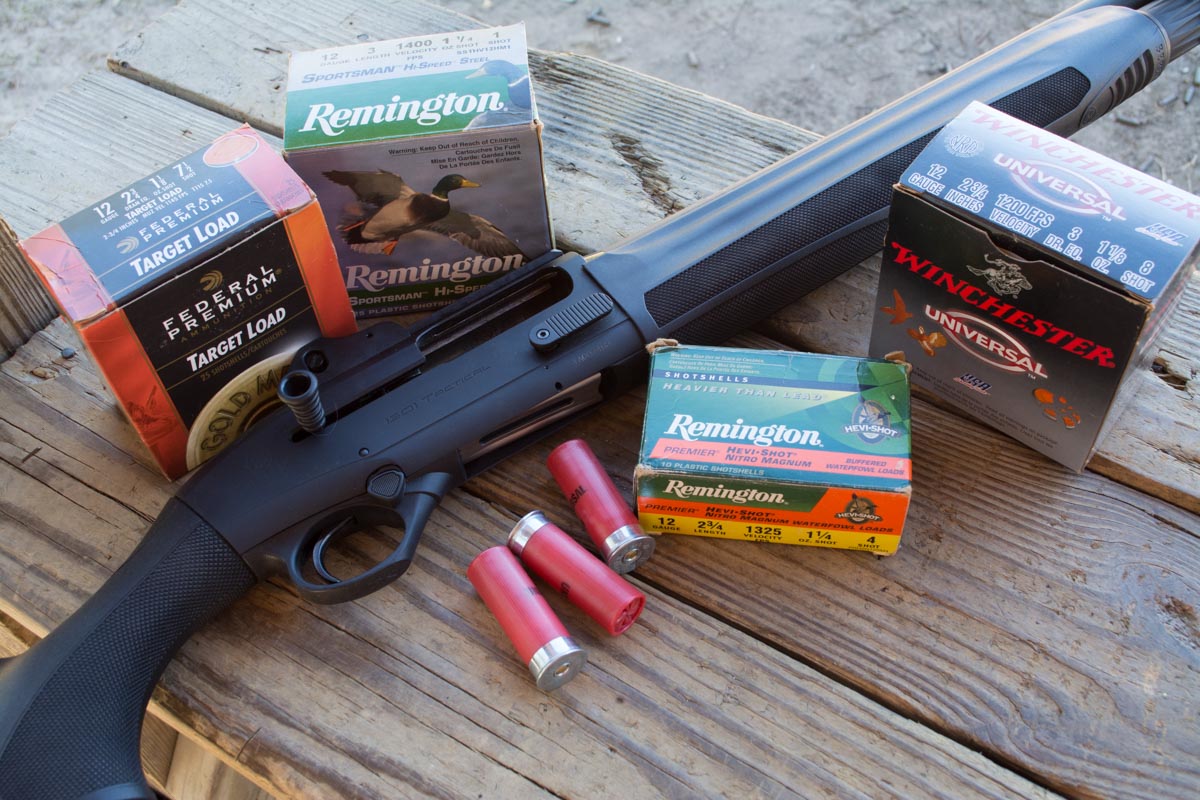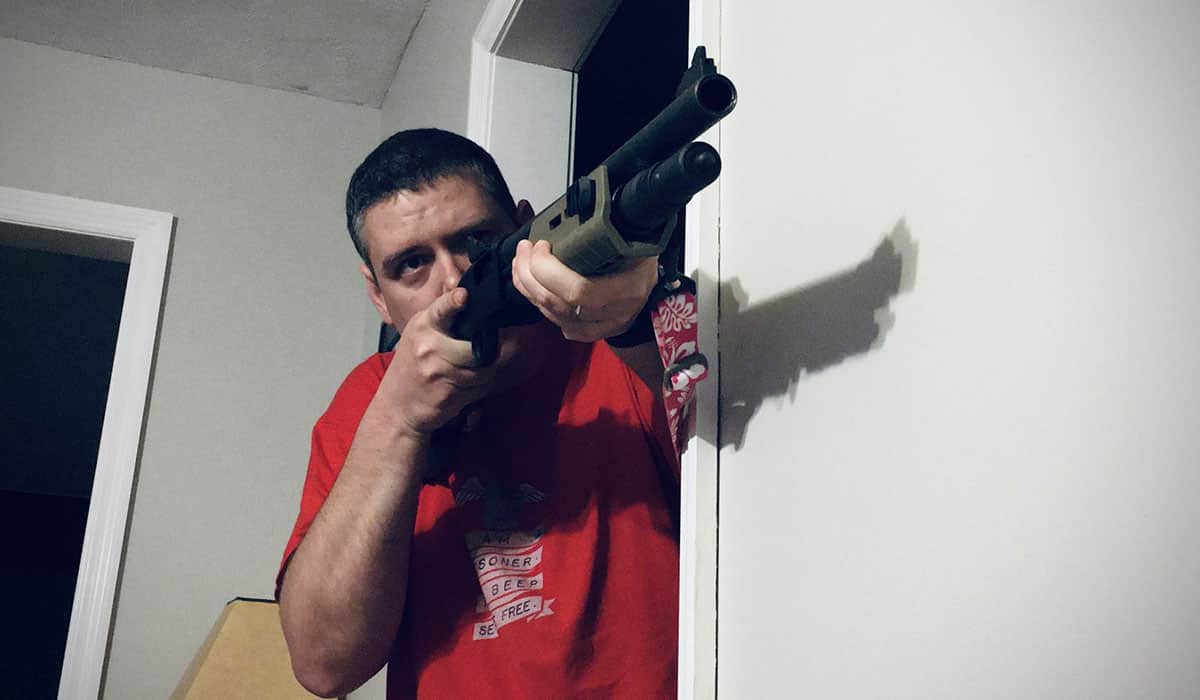Home>Home Security and Surveillance>Home Defense: How To Aim With Bead Sight
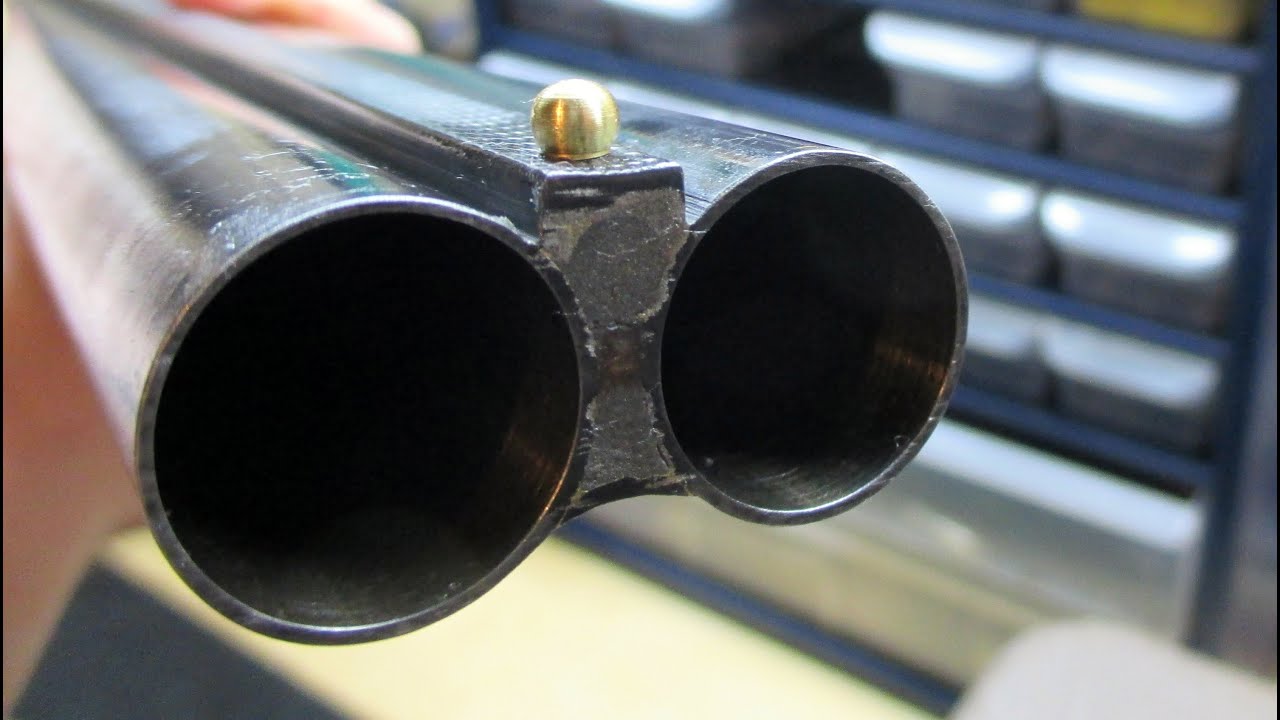

Home Security and Surveillance
Home Defense: How To Aim With Bead Sight
Modified: March 6, 2024
Learn how to aim with bead sight for home defense in this comprehensive guide. Improve your home security and surveillance with expert tips and techniques.
(Many of the links in this article redirect to a specific reviewed product. Your purchase of these products through affiliate links helps to generate commission for Storables.com, at no extra cost. Learn more)
Introduction
Welcome to the world of home defense! When it comes to protecting your home and loved ones, having a reliable and effective security system is of utmost importance. One crucial aspect of any home security setup is surveillance. The ability to monitor and record any suspicious activities around your property ensures that you are always one step ahead.
In this article, we will delve into the realm of home security and surveillance, providing valuable insights and practical tips on how to optimize your system for enhanced protection. From choosing the right cameras and sensors to strategies for placement and monitoring, we have got you covered.
But before we dive into the specifics, let’s take a moment to understand the importance of home security and why investing in a robust surveillance system is well worth it.
Your home is not only a physical structure; it’s a sanctuary for you and your loved ones. It is a place where you should feel safe and secure at all times. Unfortunately, the sad reality is that burglary and home invasion incidents are on the rise worldwide. Criminals are becoming increasingly sophisticated, finding new ways to bypass traditional security measures.
This is where home security and surveillance come into play. By installing a comprehensive and modern security system, you can significantly reduce the risk of break-ins and protect your family, belongings, and peace of mind.
In addition to deterrence, surveillance systems also provide crucial evidence in the unfortunate event of a crime. High-definition cameras can capture clear images and video footage that can be instrumental in identifying culprits and supporting investigations.
Furthermore, home security and surveillance systems have evolved significantly in recent years, thanks to advancements in technology. From smart cameras with mobile app integration to motion sensors and alarms, these systems can provide comprehensive coverage and real-time alerts.
Now that we understand the importance of home security, let’s move on to exploring the different components and strategies that you can incorporate into your surveillance setup. Whether you are starting from scratch or looking to upgrade your existing system, this article will equip you with the knowledge and tools you need to make informed decisions.
So, without further ado, let’s get started on our journey towards ensuring a safe and secure home environment.
Key Takeaways:
- Mastering bead sight aiming techniques is crucial for accurate shooting in home defense scenarios. Proper eye alignment, sight picture, and consistent practice are key elements for precision and confidence.
- Incorporating aiming drills and continuous practice can enhance your bead sight aiming skills. Focus on sight picture, target transition, and engaging moving targets to build proficiency and confidence in home defense.
Read more: What Kind Of Sights For Home Defense Pistol
Understanding Bead Sight
When it comes to firearms and aiming techniques, you might come across the term “bead sight.” Widely used in shotguns and some rifles, the bead sight is a common type of front sight. Understanding how it works and how to use it effectively is essential for accurate shooting and home defense.
The bead sight consists of a small spherical or cylindrical metal or plastic post located at the tip of the firearm’s barrel. It acts as a reference point for aligning the firearm with the target. Unlike other types of sights, the bead sight does not have any additional rear sights. Instead, it relies on the shooter’s eye alignment and focus to achieve accurate aim.
Many shotguns that are commonly used for home defense purposes are equipped with bead sights. This type of sight is simple yet effective, especially in close-range encounters. The lack of a rear sight allows for a wider field of view, allowing the shooter to track moving targets more easily.
When using a bead sight, the shooter’s focus should primarily be on the target, with the bead appearing slightly blurry. This technique, known as target focus, allows for quick and instinctive aiming in high-stress situations.
It’s important to note that bead sights often come in different sizes and colors. The size of the bead can vary to accommodate different shooting preferences and lighting conditions. Some shooters prefer larger beads for improved visibility, while others opt for smaller ones for increased precision. Similarly, colored beads, such as red or white, can enhance visibility and contrast against different backgrounds.
Understanding how to properly align your eye with the bead sight is crucial for accurate aim. It’s essential to position your dominant eye directly over the bead, ensuring that it is centered and in line with the target downrange. This alignment allows for consistent shot placement and improved accuracy.
Next, let’s explore the different techniques and tips for achieving optimal eye alignment and sight picture, as well as methods for sight adjustment to fine-tune your aim.
Proper Eye Alignment
Proper eye alignment is the foundation of accurate aiming with a bead sight. It ensures that your eye is positioned correctly relative to the firearm, allowing for precise aim and target acquisition. Here are some tips on achieving and maintaining proper eye alignment:
1. Dominant Eye: Determine your dominant eye before aligning your eye with the bead sight. Your dominant eye is the one that your brain relies on for visual input. To find your dominant eye, extend your arms in front of you and create a small triangle using your thumbs and index fingers. With both eyes open, focus on a distant object through the triangle. Close one eye at a time, and the eye that keeps the object centered in the triangle is your dominant eye.
2. Consistent Positioning: When shouldering your firearm, make sure to consistently position your dominant eye directly behind the bead sight. Achieving a consistent cheek weld with the stock is essential, as it helps align your eye with the bead sight and maintains a stable shooting platform. Practice shouldering your firearm repeatedly to develop muscle memory and establish a consistent position.
3. Eye Relief: Eye relief refers to the distance between your eye and the bead sight. For optimal eye alignment, strive to maintain a consistent eye relief every time you shoulder the firearm. Holding your head too far back or too close to the stock can affect your sight picture and accuracy. Experiment with different eye relief distances to find the position that works best for you.
4. Head and Neck Alignment: Proper alignment of your head and neck is crucial in achieving and maintaining eye alignment. Keep your head and neck in a natural and relaxed position, with your neck slightly forward, and avoid excessive tilting or bending. This posture helps ensure that your dominant eye is directly in line with the bead sight and the target.
5. Avoid Eye Dominance Shifts: It’s common for some shooters to experience a shift in eye dominance when looking down the barrel of a firearm. This can lead to alignment issues and affect accuracy. To prevent this, practice focusing on the target while keeping both eyes open. This technique allows your dominant eye to maintain its position and focus while still having a wider field of view.
Remember, achieving proper eye alignment takes practice and conscious effort. Regular range sessions and dry-fire exercises can help you develop muscle memory and improve your ability to consistently align your eye with the bead sight. By mastering proper eye alignment, you set the stage for accurate and effective shooting during home defense scenarios.
Sight Alignment Techniques
Now that we understand the importance of proper eye alignment, let’s explore the different techniques for aligning the bead sight with the target. Sight alignment refers to the positioning of the bead sight in relation to the target, ensuring that it is centered and properly aligned for accurate aim. Here are some sight alignment techniques to help you achieve precise and consistent shots:
1. Centered Bead Sight: The first step is to ensure that the bead sight is centered in the middle of the target when aligning your shot. Focus on placing the bead directly on the target to ensure proper alignment. This technique works well for quick and instinctive shooting in close-range home defense situations.
2. Front Sight Focus: Another sight alignment technique is to shift your focus from the target to the bead sight itself. By maintaining a clear and sharp focus on the bead, you can ensure that it remains aligned in the center of the target. This technique is particularly effective for precision shooting at longer distances or when aiming for smaller targets.
3. Sight Picture: Sight picture refers to the combined view of the bead sight and the immediate surroundings. It includes the alignment of the bead with the target, as well as ensuring that the bead is level and centered within any additional rear sights or notches. Achieving a consistent and correct sight picture is essential for accurate and repeatable shots.
4. Eye-Target-Beak Alignment: To further enhance your sight alignment, focus on aligning your eye, the target, and the bead sight in a straight line. The three should form a continuous alignment, with no gaps or tilting. This technique ensures precise aiming and prevents parallax errors that may occur if the bead sight is not properly aligned with your dominant eye.
5. Practice Slow and Steady: Developing sight alignment skills requires practice and patience. Start by practicing slow and deliberate shots, paying close attention to the alignment of the bead sight with the target. As you become more comfortable, gradually increase the speed while maintaining proper alignment. Regular practice will help solidify the muscle memory required for consistent sight alignment.
Remember, sight alignment is a fundamental aspect of accurate shooting. By mastering these sight alignment techniques and incorporating them into your training routine, you can ensure that your shots are on target when it matters most during home defense scenarios.
Front Sight Focus
Front sight focus is a key aspect of effective shooting with a bead sight. This technique involves shifting the focus of your eyes from the target to the front bead sight, ensuring that it remains sharp and clear while the target appears slightly blurry. By prioritizing front sight focus, you enhance your ability to align the bead with the target and achieve accurate aim. Here are some important points to keep in mind when using front sight focus:
1. Clarity and Sharpness: When using front sight focus, the front bead sight should be your primary point of focus. It should be crystal clear and sharp, allowing for precise alignment and aiming. Ensure that your eyes are relaxed, and you are focusing on the front bead with clarity and attentiveness.
2. Blurry Target: One of the key aspects of front sight focus is that the target will appear slightly blurry or out of focus. This is normal and expected. Your brain relies on the sharpness of the front sight to make accurate adjustments and maintain alignment. The slight blur of the target helps in maintaining a smooth and steady sight picture.
3. Preventing Target Fixation: In high-intensity situations, it is common for shooters to experience target fixation – becoming overly preoccupied with the target at the expense of proper sight alignment. Front sight focus helps in overcoming this by redirecting your attention and focus to the front bead sight, ensuring that you remain aligned and focused on achieving accurate shots.
4. Improved Precision: Front sight focus is particularly beneficial for precision shooting. By honing in on the front bead, you can minimize distractions and external factors that may affect your aim. This technique allows for improved concentration and control, resulting in more accurate and consistent shots.
5. Practice and Familiarity: Like any shooting skill, front sight focus requires practice to become proficient. Regular range sessions, dry-fire drills, and simulated shooting scenarios can help you develop the muscle memory and familiarity needed to instinctively shift your focus to the front sight. With time and consistent practice, front sight focus will become second nature to you.
Remember, front sight focus is a valuable technique that can significantly enhance your shooting accuracy with a bead sight. By prioritizing the clarity and alignment of the front bead, you can maintain precise aim and improve your ability to effectively defend your home.
Focus on aligning the front bead with the center of the rear bead for accurate aiming. Keep both eyes open to maintain situational awareness while aiming.
Read more: How To Train A Dog For Home Defense
Target Focus
While front sight focus is essential for precise aiming, target focus is equally important for effective shooting with a bead sight. Target focus involves shifting your attention and visual focus primarily to the target itself while maintaining awareness of the front bead sight. This technique is particularly useful in close-range home defense situations where quick target acquisition and accuracy are paramount. Here are some key considerations when utilizing target focus:
1. Peripheral Awareness: When employing target focus, it’s crucial to maintain a wide field of vision and peripheral awareness of your surroundings. By keeping your eyes focused on the target, you can better perceive any potential threats or movements in your environment. Peripheral awareness allows you to react quickly and respond to changing situations when defending your home.
2. Instinctive Shooting: Target focus is closely tied to instinctive shooting, where your body and mind work together to align and aim the firearm without consciously fixating on the bead sight. By relying on muscle memory and training, you can intuitively guide the firearm towards the target while maintaining a clear and sharp focus on it. This technique facilitates rapid target acquisition and engagement.
3. Quick Shot Placement: In high-stress situations, such as a home intrusion, target focus enables you to quickly assess and engage the threat with minimal delay. Your focus on the target allows for faster decision-making and accurate shot placement. This technique is particularly effective in close-quarters encounters where there is not much time for precise sight alignment.
4. Balancing Speed and Accuracy: Target focus strikes a balance between speed and accuracy. While front sight focus is crucial for precise shooting at longer distances, target focus allows for rapid and instinctive engagement at close ranges. By prioritizing the target while maintaining awareness of the front bead sight, you can effectively defend your home without compromising on accuracy.
5. Training and Familiarity: Like any shooting technique, target focus requires practice and familiarity to become proficient. Regular range sessions, scenario-based training drills, and simulated home defense scenarios can help you refine your target focus skills. Through repetitive training, you’ll develop the ability to quickly shift your focus to the target while maintaining situational awareness.
Remember, target focus is a valuable technique for close-range home defense scenarios. By training to rely on muscle memory and leveraging peripheral awareness, you can respond swiftly and accurately to threats while maintaining a sharp focus on the target. Combine target focus with front sight focus for a well-rounded approach to shooting with a bead sight.
Sight Picture
When using a bead sight, achieving a proper sight picture is crucial for accurate shooting and home defense. Sight picture refers to the alignment and relationship between the front bead sight, rear sights (if present), and the target. It involves maintaining consistent alignment and ensuring that the bead and the target are properly placed within the sights. Here are some key points to consider when establishing a sight picture:
1. Centered Bead Sight: The first step in establishing a sight picture is to align the bead sight in the center of the rear sights or any notches. This ensures that the bead is aligned with the bore of the firearm and the target. The bead should appear symmetrical and centered in relation to the rear sights.
2. Equal Gaps: In a proper sight picture, there should be equal gaps on either side of the front bead between the rear sights. This balanced alignment helps ensure that the bead is centered and prevent any horizontal deviations in your aim. Adjustments may be necessary to achieve equal gaps based on your shooting preferences and firearm setup.
3. Level Bead Sight: Another important aspect of a sight picture is ensuring that the bead sight is level. It should sit parallel to the ground or be slightly tilted downward, depending on your shooting style and the desired point of impact. A level bead helps maintain consistency in shot placement and compensates for any vertical variations in your aim.
4. Clear Sight Alignment: While focusing on the target, ensure that the front bead sight and the rear sights are aligned properly. This alignment should allow you to see the target clearly through the gap underneath the bead, ensuring that it remains in your line of sight. A clear sight alignment helps maintain accuracy and allows for quick target acquisition.
5. Consistency is Key: Developing a consistent sight picture is essential to improve your shooting accuracy. Practice shouldering your firearm and establishing the same sight picture every time you aim. Consistency in sight picture helps develop muscle memory and enables you to quickly align the sights and engage the target, especially in high-pressure home defense situations.
Remember, establishing a proper sight picture with a bead sight is a fundamental skill for accurate shooting. By aligning the bead sight, maintaining equal gaps, and focusing on a clear sight alignment, you can ensure that your shots are on target when defending your home.
Sight Adjustment
Ensuring that your bead sight is properly aligned with your target is essential for accurate shooting. Sight adjustment allows you to fine-tune your aim and compensate for any discrepancies in shot placement. Here are some key considerations when it comes to sight adjustment:
1. Windage and Elevation: Sight adjustment typically involves two main aspects: windage (horizontal adjustment) and elevation (vertical adjustment). Windage adjustments allow you to compensate for shots that are drifting left or right, while elevation adjustments help correct shots that are hitting too high or too low.
2. Bead Sight Drift: Some bead sights are designed to allow for windage adjustments, allowing you to move the bead sight left or right to correct for horizontal deviations. This can be done using specific tools or by drifting the bead sight within its mounting slot. Consult your firearm’s manual or enlist the help of a professional if you are unsure about making adjustments.
3. Elevation Adjustment: Depending on your firearm, elevation adjustments may be possible through the use of aftermarket rear sights or by adjusting the height of the front bead sight. Some bead sights may have replaceable beads of varying heights that can be swapped to achieve proper elevation alignment. Experimenting with different bead sizes can fine-tune your shot placement at specific distances.
4. Consistent Zero: When adjusting your sight, it’s important to establish a consistent zero. This means that your firearm should be sighted-in to a specific point of aim at a particular distance. Having a consistent zero ensures that your shots are accurately aligned at the intended target area. Regularly verify your zero and make adjustments if needed, especially if you notice consistent deviations in shot placement.
5. Observe and Track: Whenever you make sight adjustments, it’s essential to observe and track the changes in your shot placement. Keep a record of the adjustments made and evaluate the impact on bullet trajectory. Take note of any patterns or deviations to inform future adjustments and shooting techniques.
6. Seek Professional Assistance: If you are uncertain or uncomfortable with making sight adjustments on your own, it’s always best to seek the assistance of a professional gunsmith or instructor. They have the expertise and tools necessary to make precise adjustments and ensure that your firearm is properly aligned.
Remember, sight adjustment is a process that requires patience, observation, and continuous evaluation. By fine-tuning your sight alignment, you can optimize your shooting accuracy and effectively defend your home.
Aiming Drills and Practice
Improving your aiming skills with a bead sight requires consistent practice and targeted drills. By incorporating specific exercises into your training routine, you can enhance your accuracy, speed, and confidence when using this type of sight. Here are some aiming drills and practice techniques to consider:
1. Dry-Fire Drills: Dry-fire exercises are a valuable way to develop muscle memory and hone your aiming skills. Practice shouldering your firearm, focusing on aligning the bead sight with a specific target or spot on a wall, and smoothly squeezing the trigger without any live ammunition. This allows you to focus solely on your sight alignment and trigger control, helping improve your accuracy and shot consistency.
2. Focus on Sight Picture: During live-fire practice, concentrate on achieving a consistent sight picture with your bead sight. Start by shooting at close-range targets, gradually increasing the distance as your skills improve. Pay attention to the alignment of the bead sight, maintaining equal gaps on each side and a level alignment. Regularly assess your sight picture and make any necessary adjustments.
3. Target Transition Exercises: Incorporate drills that involve transitioning between multiple targets to simulate real-life home defense scenarios. Set up multiple targets at different distances and practice acquiring each target quickly and accurately. Focus on your front sight and the alignment of the bead with each target, developing the ability to acquire new targets efficiently while maintaining proper sight picture.
4. Engage Moving Targets: Another vital aspect of home defense is engaging moving targets. Set up moving targets or utilize a moving target system at the range. Practice tracking the target with your eyes, smoothly transitioning to the front sight, and maintaining proper sight alignment throughout the engagement. This drill improves your ability to track and engage threats in dynamic situations.
5. Timed Exercises: Incorporate timed exercises to build speed and simulate the pressure of a home defense scenario. Set a time limit for completing a series of shots on different targets, focusing on accuracy while maintaining a sense of urgency. The timed element adds a realistic element, pushing you to make quick but precise shots.
6. Continuous Practice: Consistency is key when it comes to improving your aiming skills. Dedicate regular practice sessions to focus specifically on your bead sight aiming techniques. By incorporating aiming drills into your routine and consistently practicing, you will build confidence and proficiency in effectively using your bead sight for home defense.
Remember to always prioritize safety during your aiming practice. Follow the recommended safety protocols, including wearing appropriate protective gear and choosing a safe and controlled environment for shooting exercises.
By dedicating time and effort to these aiming drills and practice techniques, you can fine-tune your skills and become a more proficient shooter with a bead sight, providing you with the confidence and accuracy needed to safeguard your home.
Read more: How To Practice Guns For Home Defense
Conclusion
In the realm of home defense, having a reliable and effective security system is paramount. By incorporating a robust surveillance setup, you can enhance the protection of your home and loved ones. Understanding and mastering the use of a bead sight can significantly improve your shooting accuracy in high-stress situations.
Through this article, we have explored the various aspects of using a bead sight for home defense and provided insights into optimizing your aiming technique. From proper eye alignment to sight picture, sight adjustment, and aiming drills, we have covered the essential elements of accurate shooting with a bead sight.
Remember, achieving proper eye alignment is the foundation of accurate aiming. By practicing consistent eye positioning, maintaining a clear focus on the front bead sight, and developing muscle memory, you can establish the groundwork for precise shot placement.
Understanding sight alignment techniques, such as centered bead sight, front sight focus, and target focus, allows for quick and instinctive aiming in home defense scenarios. By mastering these techniques, you can enhance your shooting accuracy and response time.
Furthermore, sight adjustment provides the opportunity to fine-tune your aim and compensate for any deviations in shot placement. Regular practice and observation of shot groupings help identify adjustments needed for a proper sight picture.
Lastly, incorporating aiming drills and continuous practice into your training regimen allows for skill development, muscle memory reinforcement, and improved shooting proficiency. Dry-fire drills, focus on sight picture, target transition exercises, and engaging moving targets are effective ways to enhance your aiming skills.
Remember, proficiency with a bead sight comes with practice, repetition, and dedication. Regular range sessions, simulated home defense scenarios, and dry-fire exercises are all valuable tools to help you become a more accurate and confident shooter.
In conclusion, by understanding and implementing the techniques and practices covered in this article, you can optimize your use of a bead sight, ensuring accurate aiming and effective home defense. Invest time into refining your skills, stay focused, and most importantly, prioritize safety in all shooting endeavors.
With dedication and practice, you will gain the confidence and proficiency needed to protect your home and loved ones with precision and accuracy.
Frequently Asked Questions about Home Defense: How To Aim With Bead Sight
Was this page helpful?
At Storables.com, we guarantee accurate and reliable information. Our content, validated by Expert Board Contributors, is crafted following stringent Editorial Policies. We're committed to providing you with well-researched, expert-backed insights for all your informational needs.
